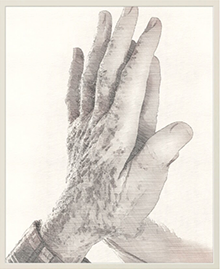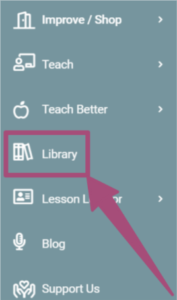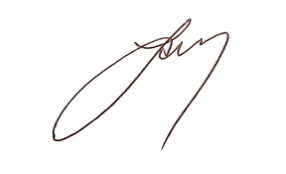
A touching moment

Last Saturday morning, I took a turn teaching the daily 8:00 AM (Pacific time) An AY a day group lesson.
To follow up on the previous Saturday’s advanced training, community gathering, and fundraiser, Kwan Wong, the organizer of this international online ATM® study project for teachers and trainees, asked me to turn the session into a special extended session, a first time ever AY a day workshop. After brainstorming the possibilities, we converged on my interest in how Moshe, especially in the earlier AY Awareness Through Movement® lessons, asked students to touch themselves while they were moving.
 The day before we’d done an unusual clock lesson: AY 83 CLOCK — THE ABDOMINAL MUSCLES, which I always think of — thanks to Katrin Smithback’s delightful teaching of this lesson during the second Strasbourg International Feldenkrais® Teacher Training (January 2000) — as “Abs of Steel,” the Moshe way. To pick up from that previous lesson, I asked the students to start where it began: lying on their backs with their knees up and their feet on the floor and then beginning to lift the pelvis. The rest of the ATM, A TOUCHING MOMENT, which lasted an hour and a minute, explored this action in greater detail.
The day before we’d done an unusual clock lesson: AY 83 CLOCK — THE ABDOMINAL MUSCLES, which I always think of — thanks to Katrin Smithback’s delightful teaching of this lesson during the second Strasbourg International Feldenkrais® Teacher Training (January 2000) — as “Abs of Steel,” the Moshe way. To pick up from that previous lesson, I asked the students to start where it began: lying on their backs with their knees up and their feet on the floor and then beginning to lift the pelvis. The rest of the ATM, A TOUCHING MOMENT, which lasted an hour and a minute, explored this action in greater detail.
During this ATM, I invited the students to have their hands play an active listening part twice.
- To add another sensory dimension to standard (interoceptive) kinesthetic awareness of respiration, I asked the students to put one hand on their bellies and the other on their chests to tactilely track the movement of their breath.
- The students used one or both of their hands, palms facing the floor, to create a pillow under their lower backs. By filling the space where most folks don’t have contact, this brings the floor to the lumbar spine giving it tactile feedback where usually there isn’t any and it adds the back of the hand as a “listening post.” As the lesson progresses, students progressively and ever so gradually lift the pelvis over the support provided by their hands, leading to differentiated sensation and refined, distributed action in the lowest joints of the spine.
- To add another sensory dimension to standard (interoceptive) kinesthetic awareness of respiration, I asked the students to put one hand on their bellies and the other on their chests to tactilely track the movement of their breath.
This learning gambit — simply touching yourself as you move — changes your experience of the action. Unlike the inside sensations of motion that you receive from your muscles, tendons, fascia, and joints, your tactile sensation is exteroceptive, that is to say, you sense yourself from the outside in. What’s more, when you’re touching yourself, you experience yourself via the envelope of your skin, sensing what’s happening from both sides the back of one hand touching your back feels itself and your back, your back feels itself and your hand touching it, and both places feel each other.  As I mention in the lesson, we can consider this a kind of stereo kinesthesia and ask how the brain brings this information together. Does the nervous system combine the two data streams to create another experience, not unlike the two-dimensional visual information from each eye combines to create our three-dimensional, stereoptic vision?
As I mention in the lesson, we can consider this a kind of stereo kinesthesia and ask how the brain brings this information together. Does the nervous system combine the two data streams to create another experience, not unlike the two-dimensional visual information from each eye combines to create our three-dimensional, stereoptic vision?
There’s more to the lesson than this, of course. For instance, to continue the theme from the day before, there’s an interlude during which the students are asked to distinguish between using their legs to lift the pelvis and using their “core” abdominal muscles.
Kwan had the premonition that more folks might show up than could be accommodated by the maximum of 100 participants allowed in the Zoom room we were using. Thankfully, he set up a live stream via the An AY a Day Facebook group to make the broadcast available because 141 of my colleagues showed up that morning, breaking every attendance record since the group started back in June of 2017. (Thank you so much to all of you who attended!)
We recorded the lesson. Gifford, Mind in Motion Online’s trusty cybrarian, has already posted the lessons to the MIMO website. The lesson is now accessible to anyone who has an account through the Mind in Motion Online (MIMO) Library.
 When you log into your MIMO account, the Library option appears in the main menu (on the left side of the page). Click on it and then Search for FREE LESSONS > ORIGINAL COMPOSITIONS. You’ll see A TOUCHING MOMENT listed as the last lesson in that section. You can download the audio (MP3) files to listen to the lessons whenever or wherever you like. Or you can stream the lessons directly from MIMO to your internet-connected smartphone, tablet, computer, etc.
When you log into your MIMO account, the Library option appears in the main menu (on the left side of the page). Click on it and then Search for FREE LESSONS > ORIGINAL COMPOSITIONS. You’ll see A TOUCHING MOMENT listed as the last lesson in that section. You can download the audio (MP3) files to listen to the lessons whenever or wherever you like. Or you can stream the lessons directly from MIMO to your internet-connected smartphone, tablet, computer, etc.
If you have a professional Become a Better Teacher MIMO account, you’ll also get to access the discussion that we had amongst ourselves, the interactive exercise the participants did, and the discussion we had afterward. You’ll also be able to access the transcript of the lesson that Katrin taught in Strasbourg. Just log into your BABT account and click here.
(If you have yet to claim your free MIMO account, you can sign up for it now.)
My inspiration for A TOUCHING MOMENT came from my newest online course, IT’S A LESSON (IAL), which looks at the art and science of giving 1-2-1 ATM lessons. If you’re a Feldenkrais teacher or trainees who is intrigued by this idea, interested in the role of touch in ATM, want to deepen your personal practice, and/or are ready to develop your teaching skills, you can still sign up for IAL. Though the course is over, the videos of the talks and discussions along with the audio recordings of the ATM lessons are available to anyone who signs up for the course — the final ones will be posted by the end of this week.
There are only a dozen spots remaining. Since this is the first run of IAL, we are not selling the recordings separately now nor do we plan to do so later. Though the material from this course may be included in a future online program, for the time being, the only way to get access to this down-to-earth, pragmatic, and relevant resource — so you review it and catch up on what you missed at your leisure — is to buy now. Registration is limited; once the dozen remaining spaces have been sold, the recordings will not be available to purchase.
Mind in Motion is made possible by the amazing group of folks who work with and support me. As you probably know, Trey, Lisa, Jade, Gifford, and I have been building a platform for the future of Feldenkrais, one that brings together the latest advances in technology with state of the art approaches to learning. We are on the edge of taking the website to the next level. So that we can continue to make these precious resources available and also keep developing the projects we’ve started while I’m going through and recover from my cancer treatment, I’m asking for your help and support.
The best way to support our work is to buy the digital products and courses — like IT’S A LESSON — that we make available. Along with what’s ready for you to purchase for yourself or send as a gift to someone else, we have more products being prepared, including two weeks of developmental ATMs and a never before seen, entirely new approach to learning to give the classic THE ARTIFICIAL FLOOR lesson.
We’ll let you know more about the new items soon. In the meantime, you can support our work either by signing up for a year’s subscription at $5 or $25 per month or, if you prefer, by contributing the amount of your choice. The funds you give will be used to pay salaries and bills so that the team will have jobs for the duration and so there will also be one waiting for me when I am ready to come back to work sometime late spring. In the interim, I plan to continue writing about Moshe’s method and to, occasionally, keep you posted on my progress.
If you prefer to support me personally — which I greatly appreciate since I will not be working until late spring or early summer and I’m not going to be drawing a salary until after I’m back in the saddle — then it is also possible to transfer funds directly to:
Thank you, in advance, for your support.
Whether or not you decide to sign up for a voluntary subscription or personal gift, I truly appreciate you reading my blog. Please do respond and let me know what you think.
If you like what you read, would you be so kind as to share the blog with others? And encourage them to create their very own free account on the website?
Gratefully,

Your thoughts?
Please let us know your perspective! Add your comments, reactions, suggestions, ideas, etc., by first logging in to your Mind in Motion account and then clicking here.
Commenting is only available to the Mind in Motion Online community.
Join in by getting your free account, which gives you access to the e-book edition of Articulating Changes (Larry's now-classic Master's thesis), ATM® lessons, and more — all at no charge whatsoever.
To find out more and sign up, please click here.
Please share this blog post
 This work is licensed under a Creative Commons Attribution-ShareAlike 4.0 International License
This work is licensed under a Creative Commons Attribution-ShareAlike 4.0 International License
This blog may contain one or more affiliate links. When you click on a link and then make a purchase, Mind in Motion receives a payment. Please note that we only link to products we believe in and services that we support. You can learn more about how affiliate links work and why we use them here


I am so touched by your words! Your contribution for a clearer understanding and a world wide spreading of the Feldenkrais Method is exceptional, Larry! I thank you so much for your generosity of sharing your unique insights. You bring the teaching of the FKM to a higher level.
Wow, Jutta –
I am so touched by your heartfelt response.
Thank you most kindly for your recognition and appreciation. It means a lot to me that you say so. Truly.
Hi Larry, thanks for the Touching Moment lesson. Best wishes for your challenging time ahead, my thoughts are with you. I often use my own touch and ask my class participants to use their own hands as “listening ears”, not judgmental ears, to enrich the sense of what it is they are actually doing. Thinking about the use of the hands in your lesson, behind our low back filling the space. As well as the tactile feedback I was thinking of it in terms of my interpretation of Julie Pecks language, in that we were giving ourselves ground there. For a movement to feel organised and fluid we need to be able to continue to have ground. To leap from one point of ground (the pelvis) to another point of ground (say L4) and not having the ground in between, will mean the movement feels difficult. This will apply to almost any movement done supine. Having experienced the ground in the spaces between, our system relinquishes some of the holding away from the ground so you can then remove the false ground and the nervous system has changed. I think Julie said that is why Moshe so often used the squishy rolled foam under the head and neck, to “give ground” to the neck and reduce its habitual holding. That was my thinking as I was doing the lesson.
Hello Vanessa –
Thank you for sharing your thoughts! I love what you wrote, especially how clearly you reflected the content and the spirit of where I was coming from . . . and heading toward.
Julie Peck’s expression of giving ourselves ground speaks to me personally. Back in the late 1970s, in a former San Francisco industrial building turned art complex known as Project Artaud, I started to doing contact improv. It’s this moving art and science that brought ground into my life. Once I got to know it, I learned to leap and fall and fly.
Your reflections reminded me of how Paul Newton, a trainer who’s a mutual friend of Julie and me, talks about how effort substitution by making the effort holding away unnecessary. Whether it’s a roller, your own hand or hands, or those of the teacher, once the need for the ongoing muscle contracting is gone, the tonus decreases or, as you said, relinquishes.
What strikes me curious is that this experience opens the door to one of those odd moments when you can realize what was happening only because it stops. It’s a very Feldenkraisian way to become aware, isn’t it?